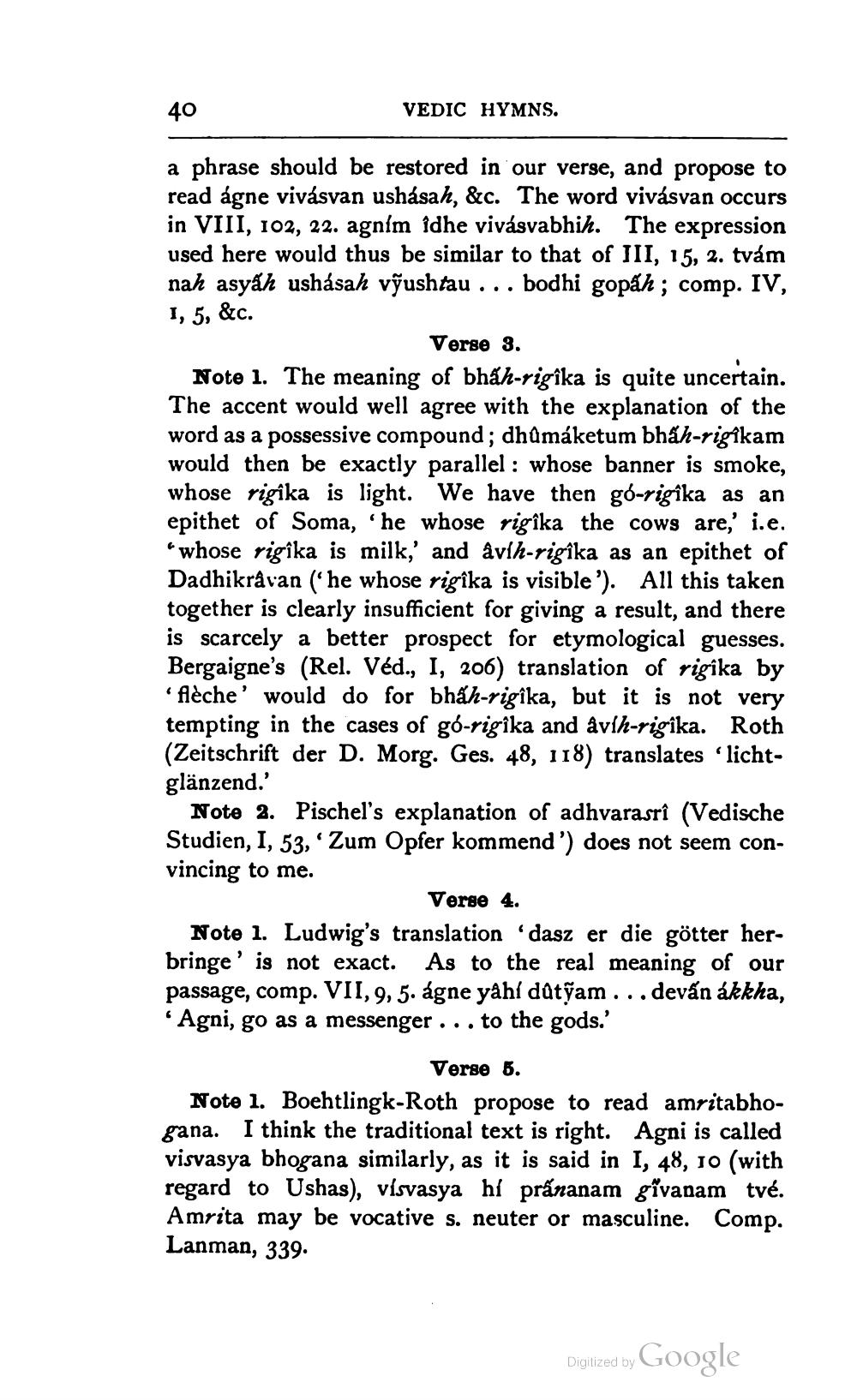________________
40
VEDIC HYMNS.
a phrase should be restored in our verse, and propose to read ágne vivasvan ushásah, &c. The word vivásvan occurs in VIII, 102, 22. agnim idhe vivásvabhih. The expression used here would thus be similar to that of III, 15, 2. tvám nah asyah ushásah võushtau ... bodhi gopah ; comp. IV, 1, 5, &c.
Verse 3. Note 1. The meaning of bhah-rigika is quite uncertain. The accent would well agree with the explanation of the word as a possessive compound; dhůmáketum bhah-rigikam would then be exactly parallel : whose banner is smoke, whose rigîka is light. We have then gó-rigîka as an epithet of Soma, "he whose rigîka the cows are,' i.e. whose rigîka is milk,' and ävlh-rigîka as an epithet of Dadhikravan ('he whose rigika is visible'). All this taken together is clearly insufficient for giving a result, and there is scarcely a better prospect for etymological guesses. Bergaigne's (Rel. Véd., I, 206) translation of rigika by 'flèche' would do for bhah-rigîka, but it is not very tempting in the cases of gó-rigîka and åvih-rigika. Roth (Zeitschrift der D. Morg. Ges. 48, 118) translates 'lichtglänzend.'
Note 2. Pischel's explanation of adhvarastî (Vedische Studien, I, 53, Zum Opfer kommend') does not seem convincing to me.
Verse 4. Note 1. Ludwig's translation 'dasz er die götter herbringe' is not exact. As to the real meaning of our passage, comp. VII, 9, 5. ágne yahí datỹam ... devấn ákkha, * Agni, go as a messenger ... to the gods.'
Verse 6. Note 1. Boehtlingk-Roth propose to read amritabhogana. I think the traditional text is right. Agni is called visvasya bhogana similarly, as it is said in I, 48, 10 (with regard to Ushas), vísvasya hí pránanam givanam tvé. Amrita may be vocative s. neuter or masculine. Comp. Lanman, 339.
Digitized by Google




